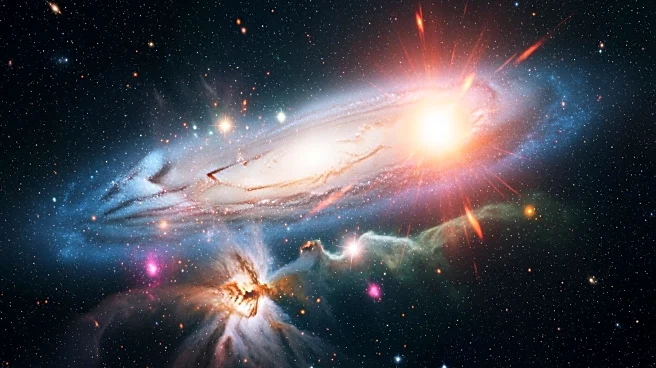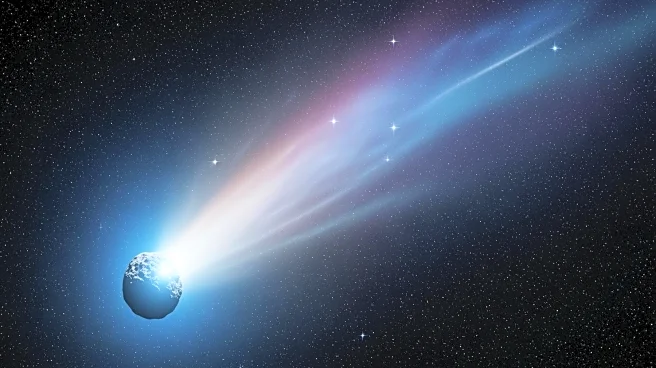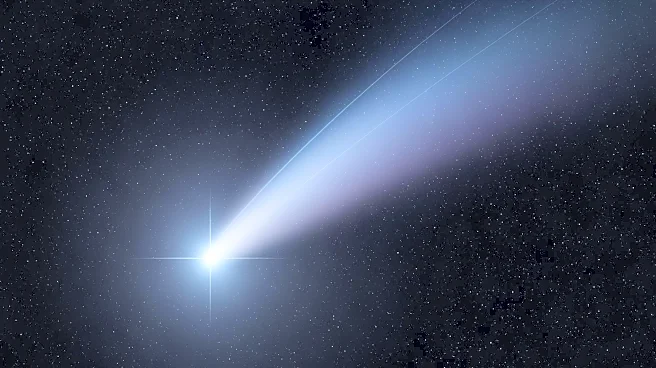What's Happening?
The James Webb Space Telescope has captured a remarkable image of the Wolf-Rayet Star WR 124, described by NASA as a 'prelude to a supernova.' This star, located approximately 15,000 light years away, is known for its intense stellar winds and shedding
of outer layers, which contribute to the formation of nebulae. The image showcases the star's complex structure and the surrounding nebula, providing astronomers with valuable insights into the life cycle of massive stars. The telescope's advanced imaging capabilities allow for detailed observation of the star's features, aiding in the study of stellar evolution and the processes leading to supernova events.
Why It's Important?
The observation of Wolf-Rayet Star WR 124 by the James Webb Space Telescope is significant for the field of astronomy as it enhances understanding of the life cycle of massive stars. Wolf-Rayet stars are crucial in the study of stellar evolution due to their role in enriching the interstellar medium with heavy elements. These stars are often precursors to supernovae, which are key events in the universe that contribute to the formation of new stars and planets. The detailed imagery provided by the telescope aids scientists in analyzing the star's behavior and the dynamics of its surrounding nebula, offering insights into the processes that govern the universe's evolution.
What's Next?
The James Webb Space Telescope will continue to observe Wolf-Rayet stars and other celestial phenomena, providing astronomers with unprecedented data to study the universe's complexities. Future observations may focus on the star's eventual supernova event, which will offer further insights into the mechanisms of stellar death and the subsequent impact on the surrounding space. Researchers will likely use this data to refine models of stellar evolution and improve predictions of cosmic events, contributing to a deeper understanding of the universe's history and future.
Beyond the Headlines
The study of Wolf-Rayet stars like WR 124 has broader implications for understanding the chemical evolution of galaxies. These stars play a vital role in the synthesis of heavy elements, which are essential for the formation of planets and life. The insights gained from observing these stars can inform theories about the origins of life and the conditions necessary for its development in different parts of the universe. Additionally, the technological advancements demonstrated by the James Webb Space Telescope highlight the progress in astronomical research and the potential for future discoveries.













